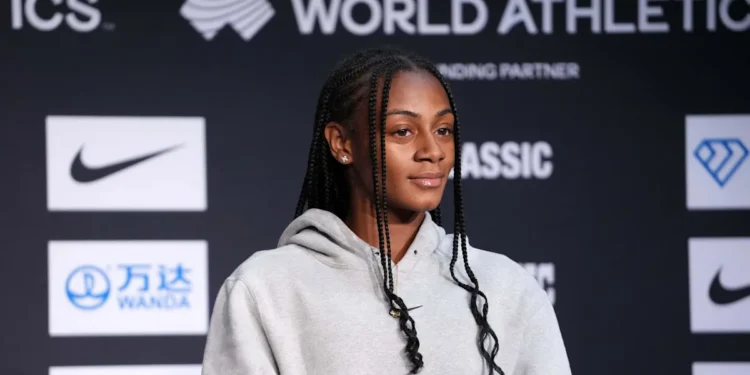Sha’Carri Richardson, one of the most prominent figures in American track and field, was arrested Sunday, July 27, at Seattle-Tacoma International Airport following what police describe as a physical altercation with her boyfriend. The 24-year-old athlete was taken into custody at a security checkpoint on suspicion of fourth-degree domestic violence assault and released the following afternoon by court order.
The incident was first flagged by a TSA supervisor, who told a Port of Seattle officer he had witnessed Richardson strike a man during a verbal dispute at checkpoint 4 in the airport’s main terminal. According to the police report, surveillance footage appeared to show Richardson pulling a backpack from the man, confronting him at close range, and pushing him multiple times, one of which sent him into a nearby column. She also reportedly threw a pair of headphones and bumped him as he tried to walk away.
The man, identified by officers as Richardson’s partner of more than two years, initially told police that the disagreement had escalated but later said nothing physical occurred. Richardson also denied any physical contact and maintained that it was solely a verbal disagreement. Police records indicate that she expressed frustration during questioning, particularly over her boyfriend’s decision to involve law enforcement.
At the time of the incident, Richardson was scheduled to board an Alaska Airlines flight to Eugene, Oregon. Her travel plans were tied to the U.S. track and field championships, from which she withdrew following the arrest. Just weeks earlier, Richardson had successfully defended her national 100-meter title during the Olympic trials and entered the championships as a reigning gold and silver medalist from the 2024 Paris Games.
The arrest raises questions not only about her legal situation, but also about how sports institutions and the public navigate high-profile incidents involving athletes at the peak of their careers. As the legal process unfolds, the case remains a developing chapter in the career of one of America’s most visible Olympic champions.







